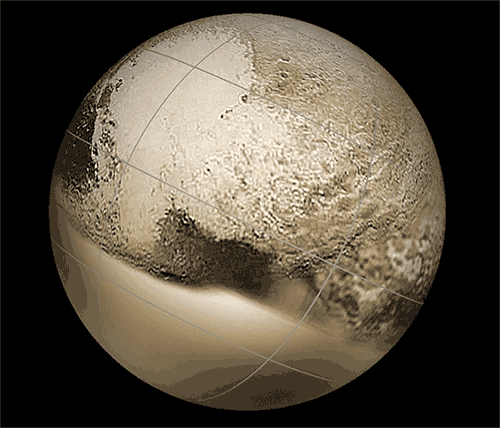

NASA’s New Horizons flyby of Pluto has given us our species’ first up close data on the dwarf planet mini-system. Greg Smye-Rumsby is using that data to make Pluto feel even closer to home.
The probe has seven scientific instruments on-board and even though the nearest point of the flyby completed several days ago, New Horizons is hard at work. Still recording data as Pluto recedes in the distance, the on-board 8GB will be transmitted back to Earth as fast as possible — at about 128 bytes a second for more than a year.
So far we’ve only received a couple images a day, butSmye-Rumsby — who teaches at the Royal Observatory Greenwich and creates starmaps for the UK’s Astronomy Now magazine — has been processing the images NASA releases and turning them into something we can more easily appreciate.
A favorite trick is creating red/blue stereo video of the terrain. Multiple photos taken of the same object from a slightly offset position, then tinted and viewed using the old-style 3D glasses reveal the terrain in 3D. It’s remarkable that there is a cold space rock 33x as far away from the Sun as the Earth is, and we are seeing its hills and valleys from back here on our own space rock.
Smye-Rumsby has also made a fold-it-yourself plutonian globe template you can print out and keep on your desk or hang from the ceiling. The image is from the New Horizons flyby and is many orders of magnitude clearer than anything even Hubble could ever have shown you so much as last week.
There’s also poster maps of the surface and a progressive series of stills.
The best images of Pluto, Charon, and the other moons are still to come. In particular, you may notice some parts of the planet are still in the dark. The New Horizons team timed the flyby such that the normally dark side of Pluto could be illuminated by reflected light off of its largest moon, Charon, on the receding part of the flyby. If you’d like to see more of Smye-Rumsby’s creations as they happen you can follow him on Twitter.
ADVERTISEMENT










